|
===================================================
How To Break 80 Newsletter
February 21, 2007
"The Web's Most Popular Golf Improvement Newsletter"
===================================================
In this issue we'll discuss...
1) Making Solid Contact
2) Controlling the Ball
3) Question of the Week- How To Avoid Fat Shots
4) Article- How To Play 50 Feet to the Pin
5) Article- What To Do When Lightning Strikes
===================================================
1) Making Solid Contact
===================================================
The key to hitting the ball straighter and farther isn’t swinging a club harder or faster, but making solid contact. Hitting the ball "square" is the single most important thing in golf. If you hit a ball with a square clubface and with speed, you’ll not only hit it longer and straighter, but you will improve your scores and lower your golf handicap.
One way to improve your ballstriking is by studying how your hands work during the swing. To understand their role in the swing, start by experimenting with small shots around the green. Watch what makes the ball run or curve or check up. Keep in mind that those things have the same affect even with a full swing.
Here’s a simple chipping drill that will not only educate you on how your hands work but also improve your ballstriking:
Start by presetting your hands next to your front leg, to get a real feel for good impact position. Your lead wrist should be flat, and your back wrist should be bent. Maintain that position through a short waist-high backswing to impact and follow- through. Now practice hitting some balls.
Keep working on this drill until it is ingrained. Then grow the swing until you are hitting full 30-yard chip.
Another way to improve your ballstriking is to learn to play your easy clubs first. As the clubs in your bag get longer, they get lighter, enabling you to generate more clubhead speed. Longer clubs are also harder to hit because of their lack of loft. This combination makes it difficult for golfers to hit the ball right on the button. So change to easier clubs when on the course.
For example, if you’re struggling to break 100, you can benefit immediately by using a 5-wood off the tee rather than a driver or 3-wood. The increased weight of the club helps the light hitter, who doesn’t generate a great deal of speed with his or her swing, and the extra loft helps the crooked hitter, who tends to hit the ball with either an open or closed clubface.
Making solid contact is the key to drive the ball longer and straighter. Spend several practice sessions working on the chipping drill. In addition, switch to the easy clubs for better contact when playing. The two changes will not only improve your ballstriking, they’ll also help you lower your scores and golf handicap.
=================================================== 2)
Controlling the Ball
===================================================
The difference between a player with a high golf handicap and one with a low golf handicap is often ball control. The golfer with the low handicap makes the ball do what she wants. She curves it around trees, hits it over a pond, or stops it on the green. A golfer with a high handicap lacks ball control and can't get it to do what she wants when she needs to. And that costs her strokes.
One shot that low handicappers find useful is the low wedge shot. You often see tour pros hit this shot when they’re inside of 100 yards. The shot cuts through the air, lands on the green, and stops after a couple of hops. It’s a useful shot because it prevents the wind from influencing the ball’s flight and it keeps the ball from running off the green.
Using a pitching wedge or a 9-iron, set up so your body weight favors the front foot. Make a short swing, finishing before the hands pass shoulder level. The short swing keeps the shot low. Leaning forward steepens the angle of attack into the ball and imparts more spin to stop the ball.
Another shot low handicappers find useful is the intentional fade. Among the most useful shots for saving strokes, the low fade enables you to go around trees or other obstacle when you don’t have a clear shot at the pin or you don’t want to go over the top of the trees or other obstacle.
Take a club like a 3-wood and grip down a few inches. Open your stance slightly, so that your body is pointing left of the target, if you’re a right-handed golfer. Now, open the face slightly at address and take a swing where you resist the natural release of your forearms. This is known as "holding on" through impact. The ball stays low and curves left to right.
Learning how to control trajectory, direction, and shot shape is vital achieving a low golf handicap. If you can curve a ball around trees and stop it on greens, you’ll be good enough to get that handicap into single digits.
=================================================== 3)
Question of the Week- How To Avoid Fat Shots
===================================================
From Hanif
How To Avoid Fat Shots
Q. Hi, Jack
I read your Go Low Ezine and it’s the best reading for golf on the Web. What is the best drill to avoid hitting the club on the ground before it hits the ball? I have been hitting good tee shots but only to get on the green in 3 or 4, mostly because I’m hitting the ground first and then the ball with my irons. Sometimes, the divot starts 2 to 3 inches before the ball. What am I doing wrong? How true is it that the divot must start after the ball has been hit? Does it do any good? Please help.
Regards,
Hanif
A. Thanks for the question, Hanif. Yes, it’s true. Divots should come in front of where the ball was. As for your problem, it sounds like you're hitting your shots "fat." In other words, you’re hitting the ground before you hit the ball because of a swing fault. Hitting a shot fat is often caused by an excessively V-shaped swing. Fat shots are also caused by a tight lie, a rushed backswing, or a desire to lift or scoop the ball out of a lie.
The key to eliminating fat shots is hitting the ball at the right impact point. Ball position—up for a wood, back for an iron—usually determines impact point. With a wood, you want to sweep the ball away with an ascending blow, since the impact point is just past the lowest point of your swing. With an iron, you want to hit the ball with a descending blow, since the impact point is just before the lowest point of your swing arc.
Here are two drills designed to eliminate fat shots:
(1) With a wood, place a tee in the ground just opposite your left foot. Don't place a ball on the tee. Keep it empty. Now take a normal swing. Focus on "picking" the tee cleanly out of the ground with your club.
(2) With an iron, take your normal stance and ground the club. Take a normal swing and try creating a shallow divot just past where you ground the club. To do that you need to hit down on the ball.
Concentrate on executing a complete backswing with both drills. They will improve rhythm and ballstriking. And they ensure that you hit the ball at the right impact point in your swing, curing you of an excessively V-shaped swing. Practice both drills to eliminate fat shots.
If you've got a golf question you'd like answered, send an email to us at
questions@howtobreak80.com and we’ll review it. I can’t guarantee that we'll use it but if we do, we’ll make sure to include your name and where you’re from.
===================================================
If you want to truly discover the secrets of shooting like the Pros and creating a more reliable and consistent swing, check out:
http://www.HowToBreak80.com
P.S. Feel free to share this newsletter with family and friends. If you
would like to subscribe to this newsletter, send a blank email to
break80ezine@aweber.com
===================================================
About the Author
===================================================
Jack Moorehouse is the author of the best-selling book
"How To Break 80 and Shoot Like the Pros!". He is NOT a golf pro, rather a working man that has helped thousands of golfers from all seven continents lower their handicaps quickly. His free weekly newsletter goes out to thousands of golfers worldwide and provides the latest golf tips, strategies, techniques and instruction on how to improve your golf game.
Gary
Winnick
|
Tools To
Help Your Game!
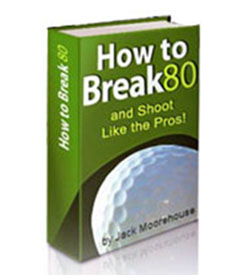
eBook
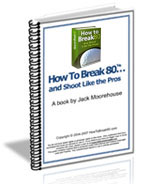
Physical Book
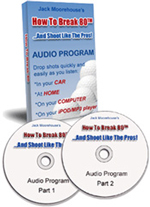
Audio Program
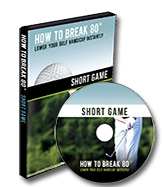
Short Game DVD
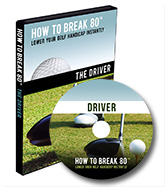
Driver DVD
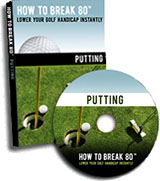
|